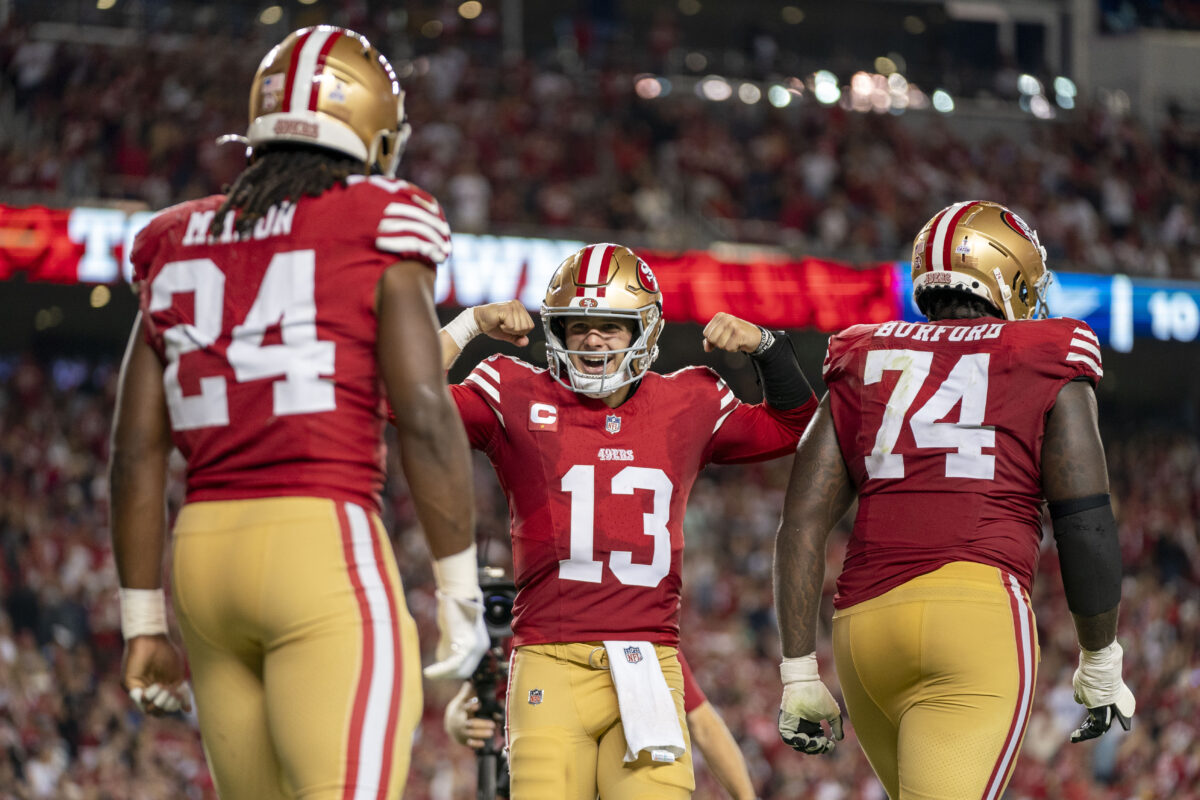Brock Purdy emerged as the NFL’s most efficient quarterback after Week 4. Then he faced a dominant Dallas Cowboys defense and strengthened his grip on the top spot.
Purdy carved up the Cowboys on Sunday Night Football, roasting the ersatz NFC contenders with 252 passing yards and four touchdowns on only 24 attempts. Meanwhile, Dak Prescott struggled against a smothering San Francisco defense and merely “good” performances from Josh Allen and Tua Tagovailoa helped the second-year pro and former 262nd overall pick widen his lead over the field.
So who else might catch him? Fortunately, we’ve got the data to learn who might be charging into his rear view.
Let’s talk about those numbers. Expected points added (EPA) is a concept that’s been around since 1970. It’s effectively a comparison between what an average quarterback could be expected to do on a certain down and what he actually did — and how it increased his team’s chances of scoring. The model we use comes from The Athletic’s Ben Baldwin and his RBSDM.com website, which is both wildly useful AND includes adjusted EPA, which accounts for defensive strength. It considers the impact of penalties and does not negatively impact passers for fumbles after a completion.
The other piece of the puzzle is completion percentage over expected (CPOE), which is pretty much what it sounds like. It’s a comparison of all the completions a quarterback would be expected to make versus the ones he actually did. Like EPA, it can veer into the negatives and higher is better. So if you chart all 33 primary quarterbacks — the ones who played at least 80 snaps in five weeks — you get a chart that looks like this:

Top right hand corner is good. Bottom left corner is bad. Try splitting those passers into tiers and you get an imperfect seven-layer system that looks like this:

These rankings are sorted by a composite of adjusted EPA and CPOE to better understand who has brought the most — and the least — value to their teams across the small sample size. It’s not a full exploration of a player’s value, but it’s a viable starting point. Let’s take a closer look.
